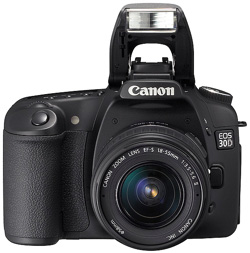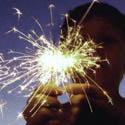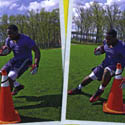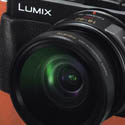PRO DSLR
By Ted Greenwald | 05.18.12 5:18 PM

What makes A DSLR "professional"? There aren't hard and fast rules, but several features set these cameras apart, like beefy alloy bodies, rubberized handgrips, and dependable shutters that can be fired hundreds of thousands of times without a hiccup. They also combine zippy, multipoint autofocus systems with the ability to fire upwards of 10 frames per second, meaning they can track and capture action in ways not possible with consumer models. Why Is It always Canon versus Nikon?
There are other camera companies selling DSLRs-notably Sony, Pentax, and Olympus. But when it comes to professional, $2,000-plus cameras, Canon and Nikon control 97 percent of the market, due mostly to their early dominance in 35 mm, which locked most pros into their lenses. And it 's clear that they care only about each other: Though their previous-generation pro-level shooters were on the market for years, their four newest models, featured here, all have release dates within just months of one another. How important are megapixels?
No number is more misunderstood or abused than pixel count. What matters more is pixel size, and that's dependent on sensor size. In two cameras with the same mega pixel count, the one with the bigger sensor should produce better photos. In models with equal sensor sizes, the one with fewer megapixels should perform better in low light or at high speeds, and the one with more will capture better detail-if the lighting is good.
BUYING ADVICE
Think about how and where you’ll be shooting. The action and variable lighting of reporting and sports Photography require the more expensive models with fast Motors and fat pixels; the controlled environment of studio work is very friendly to higher-pixel-count models.
Nikon 04 rating 8
The D4 is a low-light killer. Its full-frame, 16- megapixel sensor gobbles up the photons. We used it for a no-flash shoot in the murky depths of Grand Central Station and got clean, noisefree images at up to ISO 12,800. The quick and accurate 51-point autofocus system-which relies on a sensor that's 91 times more sensitive than the one on its predecessor- let us capture moving subjects (dancers) spinning through the shadows in sharp 11-fps bursts. WIRED Dedicated 91,000-plxel sensor for light metering, autofocus, and color/white balance adjustments. Duplicate physical controls on both ends of the hand grip for easy shooting in portrait or landscape. Eye-laval viewfinder displays 100 percent Of the scene. Backlit buttons. TIRED Second card slot u-Sony's new and expensive XQD cards. Built-in mic is mono only. $6,000
Canon EOS preview-10 X
Canon's answer to the D4, the 1D X also has a full-frame sensor but boasts a higher resolution (18 mega pixels) and can shoot continuous bursts at 12 fps. But it also costs $799 moreclass- leading 61-point autofocus systems • don't come cheap. Sports photographers will like the super-high-speed 14-fps mode (JPEGonly, no raw), while moviemakers get full manual control in 1080p video mode. $6,799
Canon EOS 50 Mark Ill rating 9
This model's predecessor, the 50 Mark II, will go down as one of the iconic cameras of the digital age. It was famously used to shoot an entire episode of House. Four years later, Canon isn't launching another revolution, but the Mark Ill is clearly a better machine. The full-frame 22.3-MP sensor delivered the expected detail, but it also produced some of the cleanest low-light shots we've ever taken: Even at ISO 25,600, a sensitivity that's almost like seeing in the dark, our photos had little of the expected noise. WIRED In-camera HDR (high dynamic ranga) mode and 6-fps continuous shooting. Silent mode for stealthy portraits. Same 61-point autofocus as Canon's new 10 X. Loads of frame speads and comprasslon options for 1080p HD video. TIRED Resolution Is only 1.2 MP higher than on the Mark II, yet the cost Is $1,300 more. $3,499
Nikon 0800 preview
With its 36.3-MP full-frame sensor, Nikon's answer to the Mark Ill is for photographers who crave detail over speed. It tops out at 4 fps, but the 0800 isn't intended for shooting Nascar; it's designed to pull luscious detail out of well-lit scenes and to capture rich 1080p video that can be piped, uncompressed, through the HOM I port. Best of all, for those on a budget the 0800 boasts the lowest price in the new crop of pro DSLRs. $3,000









